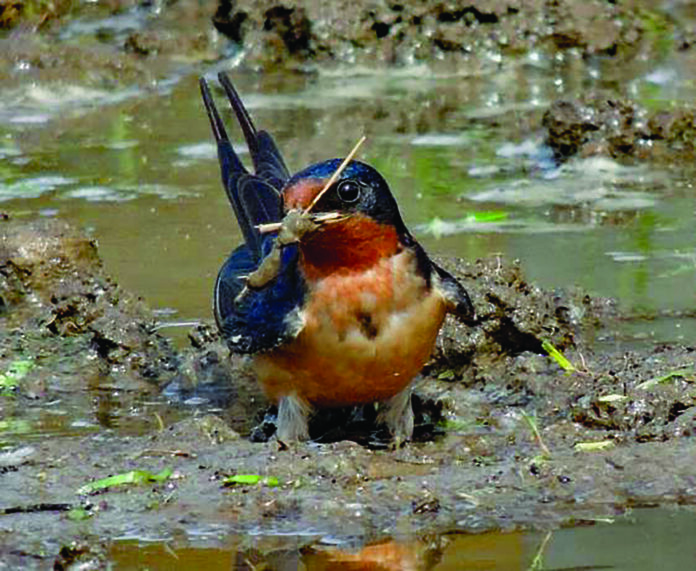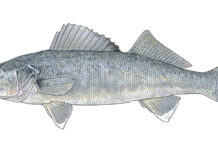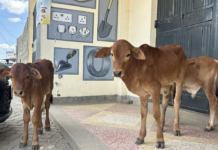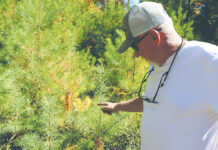
Years ago, before the invention of drones, a man came knocking on our door. He was a photographer and had been in his friend’s plane taking unique shots of peoples’ properties from above. Enlarged and framed, the prints were being offered for sale. Being the sucker that I am, I bought one.
Heck, when would I ever get a chance for a view like this again? I marveled at how tiny our six-stall barn looked from above, completely surrounded by green meadows and pastures. The freshly mowed lines from the finishing mower looked tidy and straight. I patted myself on the back for the perfection.
Pull of spring
Far away in South America, a male barn swallow was feeling the pull of the spring migration. It was time to begin his northward journey to a safe destination that would allow him to raise a family and ensure the continuation of his species. In his tiny brain, a vision was forming; the image of a tiny six-stall barn, completely surrounded by green meadows and pastures. This was a haven that he knew to be safe and familiar. Mother Nature had programmed in the GPS points. Soon he and others with the same points would take flight in an arduous journey with only one thing in mind, that barn they knew so well in the country.
Every spring, I await the arrival of the first barn swallow to our barn with great anticipation. So much so that I record their arrival date on my calendar. Usually a day in April (this year April 20), it begins with the arrival of a single bird. With its iridescent blue back shining in the sun and forked tail trailing behind, it makes large, sweeping passes around the pastures and finally musters the courage to fly straight down the aisleway, in one end and out the other. It roosts in our barn overnight and repeats the ritual for the next few days. Just when I begin to wonder what happened to the others, they begin to stream in and their sweet chattering calls increase in decibels. Soon there are pairs sitting together, bickering about where this year’s nest site will be. The barn is alive with life.
Making a home
Boy, do we cater to our swallows. We have attached small wooden platforms to the joists the entire length of the aisle. These provide perfect locations for the heavy mud nests, but not all the birds prefer to utilize them. Some nest atop the light fixtures or in a stall. Much work is involved in bringing mouthful after mouthful of mud to the location where it is attached to a base and formed into a sturdy cup. In fact, a single bird will make over 1,000 trips to complete a nest.
We keep a hose hooked up during this time and every morning wet down a grassless area near our pasture gate. This puddle provides the perfect concoction of mud and grass stems which the swallows graciously utilize daily until their nests are complete.
Once the nest itself is finished, the birds begin their search for soft feathers in which to line the cup and cradle the eggs. We have about a dozen free-ranging chickens on our farm, but feathers aren’t always available, especially white ones, which are what the barn swallows prefer over all others. I have one white hen and she is always broody. This makes it easy to sneak into the coop every day and pluck a few of her soft downy feathers. Obviously, this doesn’t seem to bother her much, as she never exits her post.
The swallows love it when I offer them feathers. I hold one up high and release it into the breeze. A free-for-all ensues as one swallow nabs it in its beak, takes it high into the air and releases it, only to have another grab it up and do the same. This is the closest thing to a real game that I have ever seen birds perform. They also help themselves to feathers I push into floral foam held by a cup.
I continue to provide the swallows with feathers until it looks like every nest is bulging with them, and the birds are beginning to lay their eggs and begin incubation. On average, five white eggs with brown speckles make up the clutch. My white hen is always happy when this next phase of nesting gets underway.
Next phase
In about 16 days, tiny chirps can be heard from above as the adults poke around in the nest with delicate adoration of their tiny hatchlings. Their quest for insects ensues, as each baby gobbles hundreds per day. This is where the swallows step up to earn their keep.
As if paying rent, the swallows unknowingly enact an insect control program as they work nonstop to fill the insatiable appetites of their youngsters. The number of bugs they consume creates a noticeable drop in pests here on our farm. As my tractor travels back and forth in an effort to mow the ever-growing grass, I am surrounded by swallows as they dip and dive around me, snatching insects disturbed into flight as I travel.
I love to focus on a single insect I kick up and watch it until suddenly it disappears into the mouth of a swallow. I never tire of observing the amazing aerial aptitude of these birds who do all their eating and drinking on the wing.
After a mere three weeks, the youngsters are ready to fledge. We are very mindful of this event and are careful when driving down the driveway or mowing until the fledglings get their bearings and are capable of sustained flight. It’s amazing how the parents line them up in a row on the fence for feeding.
Within a week or two, most pairs of swallows are starting on a second brood. Some of them build completely new nests, while others utilize the same one. The process begins again as yet another batch of swallows enters the world.
By now, the crescendo has reached an amazing cacophony. The barn has never been so lively. I am energized by the life force here. Then suddenly, one day in late August, I enter the barn and am greeted by an eerie silence. The day I have been dreading has arrived and I know the swallows have departed for another year. Their journey to the southern hemisphere has begun. I know that their internal GPS points will guide them to a safe and familiar spot in which to overwinter.
Come spring, an image will begin to form in their minds, the image of a tiny six-stall barn surrounded by green meadows and pastures, and they can once again begin their northward migration to this familiar location where they can safely raise a family and ensure the continuation of their species.













Excellent read.